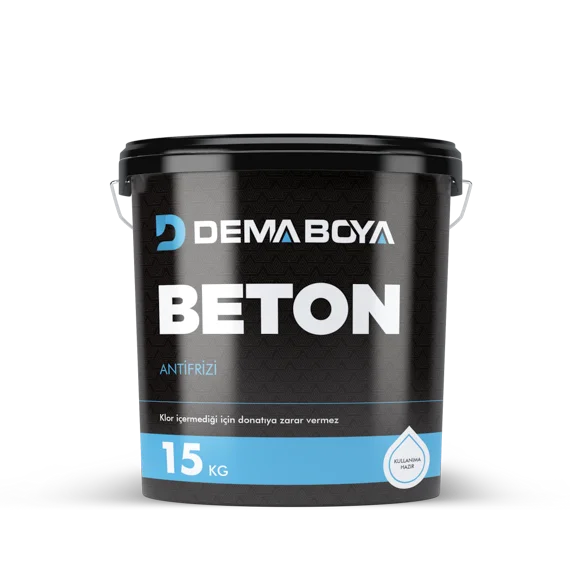Demafix Beton Antifrizi

|
Technical Spesifications: |
|
|
Appearance : |
Brown liquid |
|
Liquid Density : |
1,15 ± 0,05 kg/lt (20°C) |
|
pH : |
6 - 8 (20°C) |
|
Chlorine Content : |
< %0,1 |
|
Freezing Point: |
-10°C |
Definition:
Free, polynaphthalene sulfonate and nitrate salt based, plasticizing concrete and mortar additive material that accelerates the setting of concrete in weather where the risk of frost is high and provides resistance to freezing.
Use Fields :
•Protection of concrete against frost effects that continue throughout the day in cold weather.
•In applications where early high strength is required in cold weather.
•Protection of cement-based interior and exterior plasters against freezing.
•In sudden temperature drops.
•When early mold removal is required.
•In floor screeds.
•In the production of all kinds of reinforced and unreinforced concrete.
•In precast and prefabricated concrete castings.
•It is used in the production of ready-mixed concrete with and without pump.
Advantages :
•It provides early strength by protecting the concrete against frost during concrete pouring in cold weather.
•Shortens the initial and final setting times of concrete.
•Since it does not contain chlorine, it does not damage the reinforcement and is not corrosive. It can be used safely in reinforced concrete structures.
•Ensures continuity of work without the need to postpone concrete pouring in cold weather.
•It ensures homogeneous distribution of cement and sand particles in concrete and mortar, allowing hydration to occur on a larger surface.
APPLICATION Information :
•In DEMAFIX ANTIFREEZE application, mixing water is added to the concrete or mortar in two stages. In the first stage, approximately 50% of the mixing water without DEMAFIX ANTIFREEZE is added to the concrete or mortar. In the second stage, the amount calculated according to the amount of binder is added into the remaining 50% water.
DEMAFIX ANTIFREEZE is added.
• In order to distribute DEMAFIX ANTIFREEZE homogeneously in the concrete or mortar, it is preferably mixed at high speed for 1 - 2 minutes.
Consumption :
For 100 kg of binder (cement, fly ash, slag , etc. ) 1 - 2.5 kg of product is used. This amount may increase up to 5 kg of product addition in very cold weather.
Attention :
•It should only be used as an additive in concrete and mortar applications. Ready-to-use construction chemicals (repair mortars, thermal insulation board adhesives and plasters, ceramic adhesives, cement-based plaster materials, etc. ) should not be used instead of water or as a precaution against frost.
•The composition ratios in concrete or mortar and the amount of additive usage should be determined according to the desired concrete class and properties, as a result of the raw materials to be used on the construction site and laboratory preliminary tests.
•Direct addition of additives onto the dry mixture (binder + aggregate) will prevent homogeneous distribution, causing the targeted mechanical properties of the concrete not to be achieved. The additive must be added to the water.
•If more additives are used than the recommended consumption amount, a change in the setting time of the mixture may be observed.
•In order to prevent the materials to be used in concrete or mortar mixture from being affected by cold, the products should be stored under appropriate conditions and care should be taken to ensure that the temperature of fresh concrete is at least between +5°C and +15°C, depending on the environmental temperature and the concrete casting thickness.
• Until the concrete reaches a strength of 4 - 5 N/mm2, rapid temperature and moisture loss should be prevented and protected with appropriate curing methods.
•Wooden formwork should preferably be used instead of steel formwork.
•It must be shaken before use.
PACKAGING :
In 15 kg buckets
Shelf Lifespan :
It can be stored in its unopened package in a cool and dry environment between +5°C and +15°C for 12 months. Shake well before use.
Protect against freezing.
Health And Safety :
As with all chemical products, contact with food products, skin, eyes and mouth should not be avoided during use and storage. During application, work clothes, protective gloves, glasses and masks in accordance with occupational and worker health rules should be used. If swallowed by accident, consult a doctor. In case of contact with skin, wash with plenty of water. It should be stored in places inaccessible to children.
